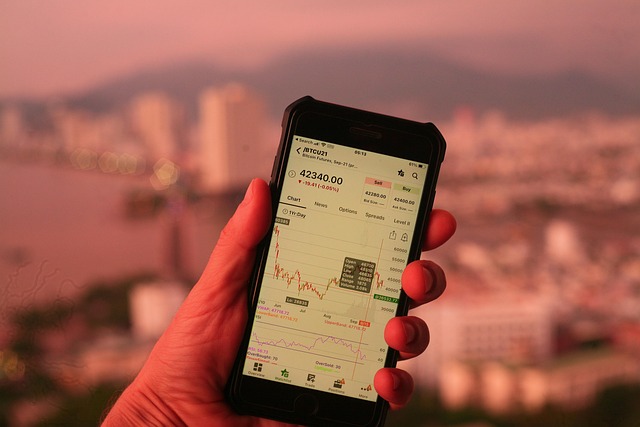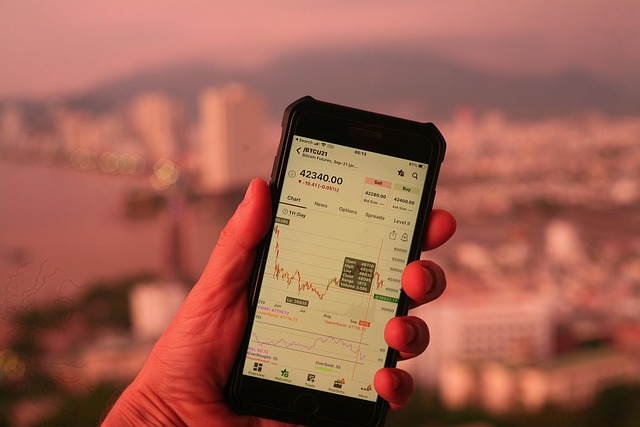Choosing the Best Bitcoin App No Fees: A Practical Guide
Author: Jameson Richman Expert
Published On: 2025-11-21
Prepared by Jameson Richman and our team of experts with over a decade of experience in cryptocurrency and digital asset analysis. Learn more about us.
Bitcoin app no fees is an attractive phrase for anyone entering crypto — it promises cost-free buying and selling of BTC. This article explains what "no fees" really means, how apps and exchanges deliver zero-fee experiences, hidden costs to watch for, a step‑by‑step selection checklist, and actionable tactics to minimize costs while keeping security and liquidity high. You’ll also find recommended resources and links to platform options so you can evaluate choices quickly and confidently.

What “Bitcoin App No Fees” Really Means
When an app advertises itself as a "bitcoin app no fees" offering, there are several possible interpretations. True zero fees would mean no commission, no spread, no deposit/withdrawal fees, and no network costs — which is rare. More commonly, platforms advertise no trading commissions but make money through spreads (the difference between buy and sell prices), order routing, or other ancillary fees.
- No commission: The platform charges no per-trade fee.
- No spread: The platform uses live order book pricing and charges no markup (rare).
- No deposit/withdrawal fees: Some apps waive fiat deposit fees but still pass blockchain network fees to users.
- Promotional zero fees: Temporary offers that apply to certain trades or volumes.
Understanding which of these applies to a given "bitcoin app no fees" claim is essential to avoid surprises. Below we break down common fee types and how to detect them.
Common Fee Types on Bitcoin Apps (and How They Hide)
Even apps that promote "no fees" can collect revenue in other ways. Here's how to identify typical fee vectors:
1. Trading Fees and Commissions
Some apps explicitly charge per-trade commissions (e.g., 0.1%–0.5%). "No commission" apps remove this fee, but that doesn't guarantee better execution.
2. Spread (Price Markup)
Many zero-commission apps widen the spread or price their sell/buy quotes slightly away from spot to capture profit. If a BTC spot price is $50,000, the app may quote $50,500 to buy and $49,500 to sell; the hidden cost is the spread.
3. Deposit & Withdrawal Fees
Fiat on/off ramps (bank transfers, debit/credit cards) can have charges. Blockchain network fees (miner fees) are also applied when withdrawing BTC; some apps absorb them, others pass them to you.
4. Conversion Fees & FX Margins
Converting fiat to stablecoins or between cryptocurrencies can incur FX margins. If your account is in EUR and you buy BTC priced in USD, conversion fees may apply.
5. Order Routing & Payment Processing
Platforms may route orders to market makers who pay for the flow; users may get worse prices as a result. Payment processors (card networks) also charge fees that users might indirectly cover.
6. Spread on OTC/Instant Buy Options
Instant buy/sell buttons often use over-the-counter (OTC) liquidity with a built-in spread — convenient but potentially expensive.
How to Verify a True “Bitcoin App No Fees” Offer
- Compare quotes with real-time market prices: Check live order books (on major exchanges or TradingView) and compare the app’s buy/sell prices. If their quotes are several dollars away, that indicates a spread markup. For guidance on reading market charts and quotes, see this practical TradingView guide.
- Read the fine print: Look for terms about spreads, liquidity providers, instant buy markups, deposit/withdrawal fees, and minimums.
- Test with a small trade: Execute a low-value trade and calculate the effective fee: (price_paid - mid_market_price) / trade_value.
- Check withdrawal costs: Withdraw a small amount of BTC to an external wallet and note network fees and processing time.
- Review the fee schedule: Most reputable platforms publish a fee schedule and network handling policy.
For deeper analysis on how trading volume and spreads affect execution, a specialized guide on trading volume analysis can help you evaluate whether a "no fees" claim is meaningful in practice.

Examples: How “Zero Fees” Still Costs You — Illustration
Example 1 — Instant Buy Using App:
- Market mid price: $40,000
- App buy price: $40,300 (0.75% markup)
- App sell price: $39,760 (1% spread vs mid price)
- App advertises: "Buy BTC with zero commission"
Effective cost if you buy and immediately sell: you lose roughly 1.75% due to spread. That’s the hidden fee.
Example 2 — No Trading Fee but High Withdrawal Fee:
- App charges 0% trading fee
- On-chain BTC withdrawal fee: 0.0009 BTC (~$36 at $40k)
- Effective fee depends on withdrawal frequency and trade size — for small amounts, network fees dominate.
Types of Bitcoin Apps and How They Handle Fees
Understanding the type of app is crucial when assessing "no fees":
1. Centralized Exchanges (CEX)
Examples include Binance, MEXC, Bitget, and Bybit. These platforms commonly offer low or zero-fee promotions and tiered maker/taker models. They typically have deep order books and lower spreads than instant-buy apps.
- Binance (register) — strong liquidity and low fees. (Register link: https://accounts.binance.info/en/register?ref=12093552)
- MEXC (register) — competitive fees and frequent fee waiver promotions. (Invite: https://www.mexc.co/invite/customer-register?inviteCode=mexc-1bE4c)
- Bitget (register) — options for low fees and futures. (Referral: https://www.bitget.com/referral/register?clacCode=WSVEGD6H&from=%2Fevents%2Freferral-all-program&source=events&utmSource=PremierInviter)
- Bybit (register) — derivative and spot liquidity with fee discounts. (Invite: https://www.bybit.com/invite?ref=Q8QKORN)
CEX pros: deep liquidity, lower spreads, advanced order types (limit, stop-limit), maker rebates in some markets. Cons: custodian risk if you leave coins on the exchange, KYC requirements.
2. Broker-style Apps and Instant Buy Services
Apps that prioritize user simplicity (instantly buy with card) — e.g., some mobile wallets and brokers. They often advertise no commissions but use spreads and higher instant-buy costs.
3. Decentralized Exchanges (DEX) & P2P Marketplaces
P2P platforms and DEXs can offer lower fees depending on liquidity and trading pairs. For BTC, cross-chain or wrapped BTC trades could incur bridging fees and slippage.
4. Wallets with Integrated Buy/Sell
Non-custodial wallets that allow fiat on-ramp via third-party partners. Fees depend on the integration partner and network fees for withdrawals.
Choosing a Bitcoin App No Fees: A Practical Checklist
Use this checklist when evaluating apps:
- Price Transparency: Does the app display market/last trade price and clearly show buy/sell prices and spreads?
- Fee Schedule: Is there a public, simple-to-understand fee page including network, deposit, and withdrawal fees?
- Order Types: Availability of limit and advanced orders reduces slippage and lets you avoid instant-buy markups.
- Liquidity: How deep is the order book? Check spreads on the BTC/USD, BTC/USDT pairs at different sizes.
- Security & Custody: Are funds insured? Is cold storage used? What are the withdrawal security procedures?
- Regulation & KYC: Is the exchange regulated in your jurisdiction? What KYC is required?
- Network Fees Handling: How are on-chain fees managed? Are there batching or dynamic fee optimizations?
- Customer Support & Dispute Resolution: Is there responsive support and clear dispute resolution?
- Reputation & Reviews: Look at independent reviews and community feedback.

Actionable Tips to Minimize Costs on Bitcoin Apps
1. Use Limit Orders Instead of Market/Instant Buys
Limit orders execute at your price and prevent paying spread markups. On centralized exchanges with order books, set a limit near the mid-market price to avoid hidden costs.
2. Trade on High-Liquidity Pairs
High-volume BTC pairs (BTC/USDT, BTC/USD) have tighter spreads. Avoid illiquid pairs that create slippage.
3. Use Native Network Options or Layer 2s
For small BTC transfers, consider using the Lightning Network when available — it’s designed for low fees and fast payments. Check your app/wallet support for Lightning.
4. Batch Withdrawals and Consolidate Transfers
Combining multiple smaller withdrawals into a single withdrawal reduces per-transaction network fee overhead.
5. Choose the Right On-Ramp
Bank transfers (ACH, SEPA) often have lower fees than debit/credit card purchases. Plan ahead for lower-cost deposits. For advanced traders, using stablecoins (USDT/USDC) as a bridge can be cheaper for intra-exchange transfers.
6. Monitor Timing for Network Activity
On-chain fees spike with network congestion. Use mempool/fee tracker tools to submit transactions when fees are lower. High authority resources like Bitcoin Core docs and mempool explorers can help track this.
7. Watch for Promotional Fee Waivers
Exchanges offer temporary zero-fee trading or maker rebates. Promotions can lower costs but check the terms and volume requirements.
8. Consider Peer-to-Peer (P2P) Options
P2P markets let you buy BTC directly from other users often with lower fees or competitive rates. Ensure escrow protections and verify counterparty reputation.
Security Considerations When Choosing a Low-Fee Bitcoin App
Cost savings shouldn’t come at the expense of security. Follow these principles:
- Prefer non-custodial options for long-term holdings: If you hold BTC for years, consider a hardware wallet. Exchanges are useful for trading but pose custodial risk.
- Enable 2FA and withdrawal whitelists: Protect accounts with multi-factor authentication and whitelist withdrawal addresses when available.
- Check for cold storage and insurance: Reputable exchanges and brokers disclose their custody model and whether insurance covers hot wallet losses.
- Keep software up to date: Use official wallet apps, update firmware on hardware wallets, and avoid suspicious third-party interfaces.
Comparing Popular Platforms (How They Approach “No Fees”)
Below are typical platform approaches with pros and cons:
Centralized Exchanges (e.g., Binance, MEXC, Bitget, Bybit)
Pros: Low spreads, advanced order types, low maker/taker fees, periodic zero-fee promotions. Cons: Custodial risk, KYC, potential complexity for new users.
Useful if you want tight spreads and active trading advantages. For example, Binance often offers lower fees for users who pay fees with BNB or meet volume discounts. See Binance registration for more details: https://accounts.binance.info/en/register?ref=12093552
Broker Apps / Instant Buy Services
Pros: Extremely easy to use, beginner-friendly. Cons: Higher spreads and markups, slower withdrawals to external wallets.
Wallets with Third-Party On-Ramps
Pros: Non-custodial control and private key ownership. Cons: On-ramp partners may charge fees or markups; network fees for transfers remain.
P2P & OTC Desks
Pros: Competitive pricing for large orders, privacy advantages in some cases. Cons: Counterparty risk, escrow fee structures.

When “No Fees” is Actually a Good Deal
There are scenarios where zero-fee trading is genuinely beneficial:
- High-frequency traders who take advantage of maker rebates and low spreads on centralized exchanges.
- Large-volume traders who receive VIP discounts or negotiated rates.
- Users moving fiat via bank transfers into exchanges with fee-free deposit programs and then executing limit orders on the order book.
- Promotional windows where fees are waived for specific pairs or trading activity.
When “No Fees” is a Red Flag
Be cautious if:
- The app refuses to show order book depth or real-time pricing.
- "No fee" is only applied to a narrow set of products while others have very high costs.
- There’s poor documentation about withdrawal fees or network handling.
- User reviews frequently cite hidden markups and execution slippage.
Useful Tools and Resources
Use these resources to verify prices, check network fees, and analyze liquidity:
- Bitcoin (Wikipedia) — a high-level reference on Bitcoin fundamentals.
- Bitcoin.org — educational resources and wallet recommendations.
- Real-time price charts (TradingView) to compare exchange quotes — see a practical guide to using TradingView: https://cryptotradesignals.live/tradingview-chart-meaning-2025-practical-guide/320273
- Trading volume impact and analysis — see this trading volume analysis guide to understand liquidity and execution: https://cryptotradesignals.live/trading-volume-analysis-pdf-guide/320352
- For strategic trading, including how markets may evolve, reference this Bitcoin price forecast discussion: https://cryptotradesignals.live/what-will-bitcoin-price-be-in-2025-realistic-scenarios/320832
- Advanced traders exploring AI-assisted strategies can review: https://cryptotradesignals.live/using-ai-to-trade-crypto-a-comprehensive-guide-to-maximizing-profits-in-the-digital-asset-market/320149
- For comparative crypto outlooks including Ethereum (helpful if you trade BTC versus ETH pairs): https://cryptotradesignals.live/ethereum-price-prediction-today-tomorrow-short-term-outlook-strategies/320240

Practical Walkthrough: Setting Up a Low-Cost BTC Trade
Step-by-step example for a beginner who wants low effective fees:
- Create accounts on two CEXs for price comparison — for example, Binance (https://accounts.binance.info/en/register?ref=12093552) and MEXC (https://www.mexc.co/invite/customer-register?inviteCode=mexc-1bE4c).
- Verify account and deposit fiat via a low-fee bank transfer (SEPA/ACH).
- Check order book depth and current bid/ask spreads for BTC/USDT on both exchanges; use TradingView or each exchange’s depth chart.
- Place a limit buy near the mid-market price rather than an instant buy.
- When ready to move BTC off-exchange, compare withdrawal fees and bitcoin network conditions. Consider batching transfers or using Lightning if supported by your target wallet.
- If you plan futures or margin trading, evaluate next-level fee structures on platforms like Bitget (https://www.bitget.com/referral/register?clacCode=WSVEGD6H&from=%2Fevents%2Freferral-all-program&source=events&utmSource=PremierInviter) or Bybit (https://www.bybit.com/invite?ref=Q8QKORN) for discounts and promotions.
Advanced Considerations for Traders
If you actively trade or plan to scale, keep these in mind:
- Maker vs. Taker fees: Maker orders that add liquidity often receive a lower fee or even a rebate.
- Volume tiers: Monthly volume can reduce fees; evaluate whether consolidating trades on one exchange yields better effective rates.
- API trading: Algorithmic traders should test execution via API and assess slippage and latency; sometimes a small per-trade fee is worth better fills.
- Cross-exchange arbitrage: Price discrepancies can be exploitable after factoring transfer times and network fees.
Frequently Asked Questions (FAQ)
Is there any truly free bitcoin app?
In practice, truly costless trading is rare. Even if a platform charges no commission, it may profit from spreads or other fees. The best you can do is minimize fees through transparent platforms, limit orders, and effective withdrawals.
Can I avoid on-chain fees entirely?
Not entirely if you plan to move BTC on-chain. However, using off-chain solutions like Lightning Network for small payments or waiting for low mempool periods can dramatically reduce costs.
How do I calculate the effective fee I paid?
Effective fee = (buy_price - mid_price) / buy_price + any deposit/withdrawal or conversion fees. Do this calculation per round-trip to understand true costs.

Conclusion: How to Find a Realistic “Bitcoin App No Fees” Fit
"Bitcoin app no fees" is a compelling marketing message, but buyers should be skeptical and informed. The most reliable approach is to prioritize transparency, deep liquidity, and control over execution (limit orders and order-book access). Centralized exchanges with low stated fees, good liquidity, and transparent fee schedules (e.g., Binance, MEXC, Bitget, Bybit) are often the best practical choice for low effective cost. If custody is a concern, use non-custodial wallets and choose on-ramp partners carefully.
To continue learning about market dynamics and execution, check resources like TradingView guides, trading volume analysis, and strategic outlooks linked earlier. For traders interested in advanced tools and AI-assisted methods, the AI trading guide linked above provides practical frameworks for using algorithms while managing costs and risk.
Final practical step: before moving significant funds, perform a small test trade and withdrawal to measure the real-world effective fees and execution — that single experiment will reveal whether the "no fees" claim holds true for your use case.
Further reading and platform registration links (for evaluation and comparison):
- Binance registration: https://accounts.binance.info/en/register?ref=12093552
- MEXC invite: https://www.mexc.co/invite/customer-register?inviteCode=mexc-1bE4c
- Bitget referral: https://www.bitget.com/referral/register?clacCode=WSVEGD6H&from=%2Fevents%2Freferral-all-program&source=events&utmSource=PremierInviter
- Bybit invite: https://www.bybit.com/invite?ref=Q8QKORN
- TradingView guide: https://cryptotradesignals.live/tradingview-chart-meaning-2025-practical-guide/320273
- Bitcoin price outlook (2025 scenarios): https://cryptotradesignals.live/what-will-bitcoin-price-be-in-2025-realistic-scenarios/320832
- Using AI to trade crypto: https://cryptotradesignals.live/using-ai-to-trade-crypto-a-comprehensive-guide-to-maximizing-profits-in-the-digital-asset-market/320149
- Ethereum price context and strategies: https://cryptotradesignals.live/ethereum-price-prediction-today-tomorrow-short-term-outlook-strategies/320240
- Trading volume analysis: https://cryptotradesignals.live/trading-volume-analysis-pdf-guide/320352
By combining careful platform selection, limit-order discipline, and awareness of on-chain costs, you can approach a near-zero effective fee outcome for your bitcoin trading and transfers while preserving security and execution quality.